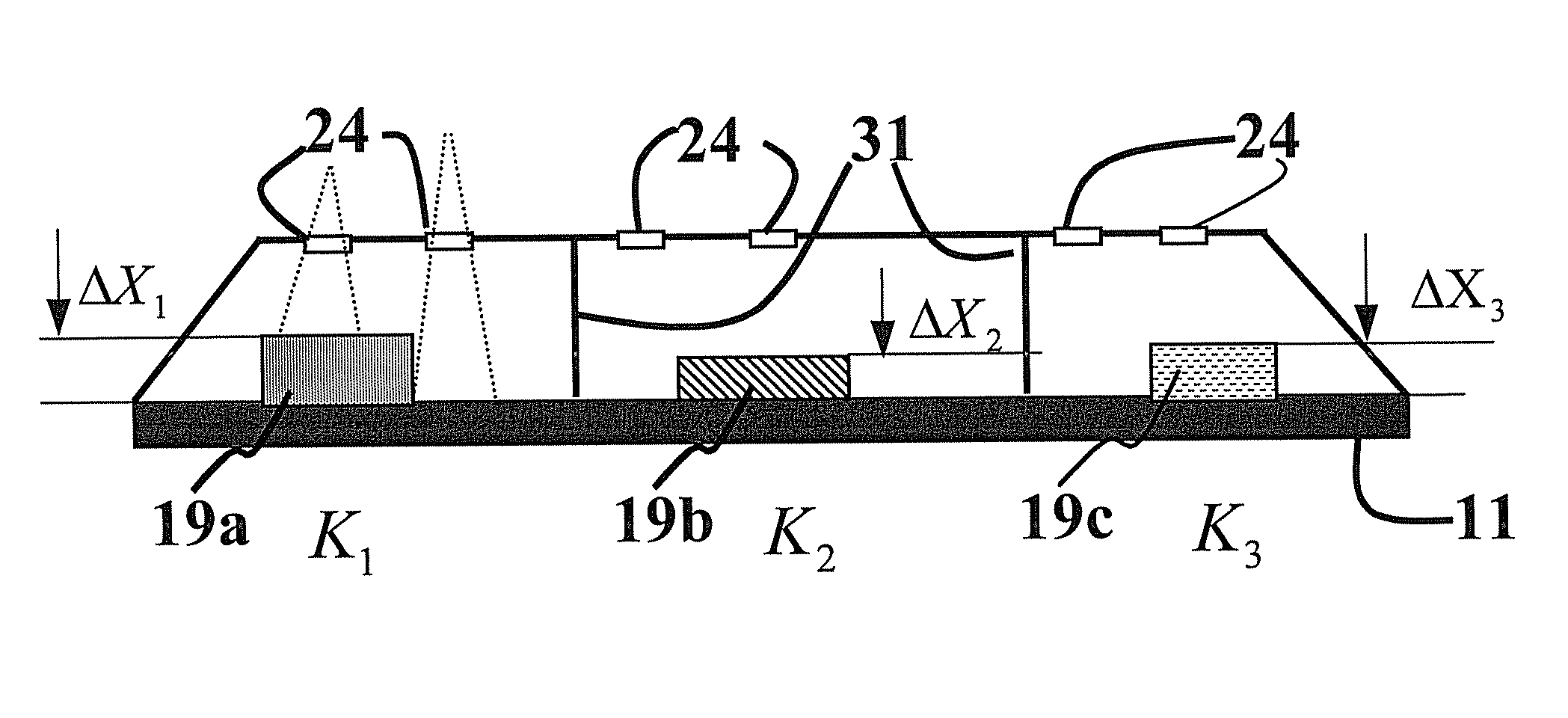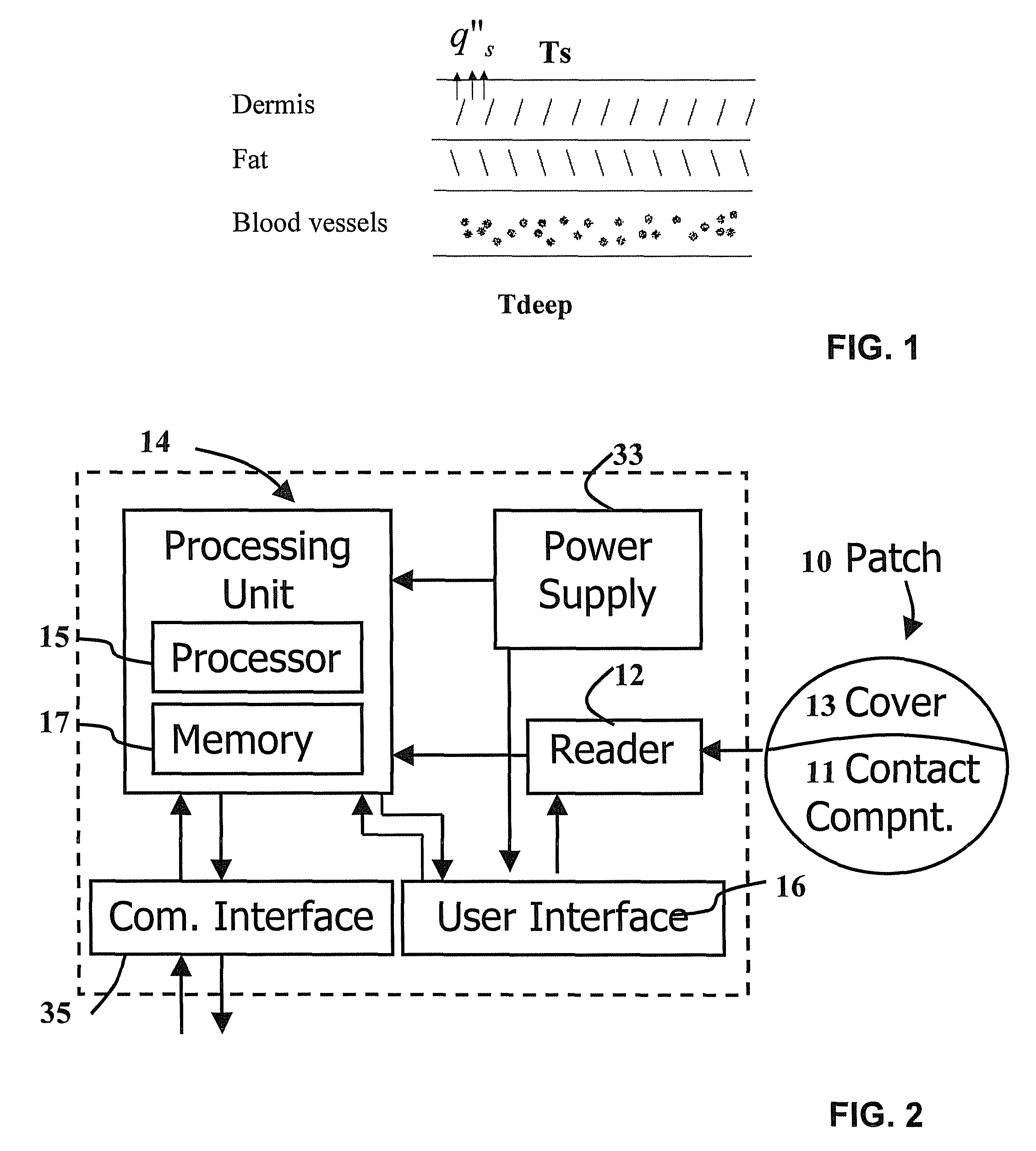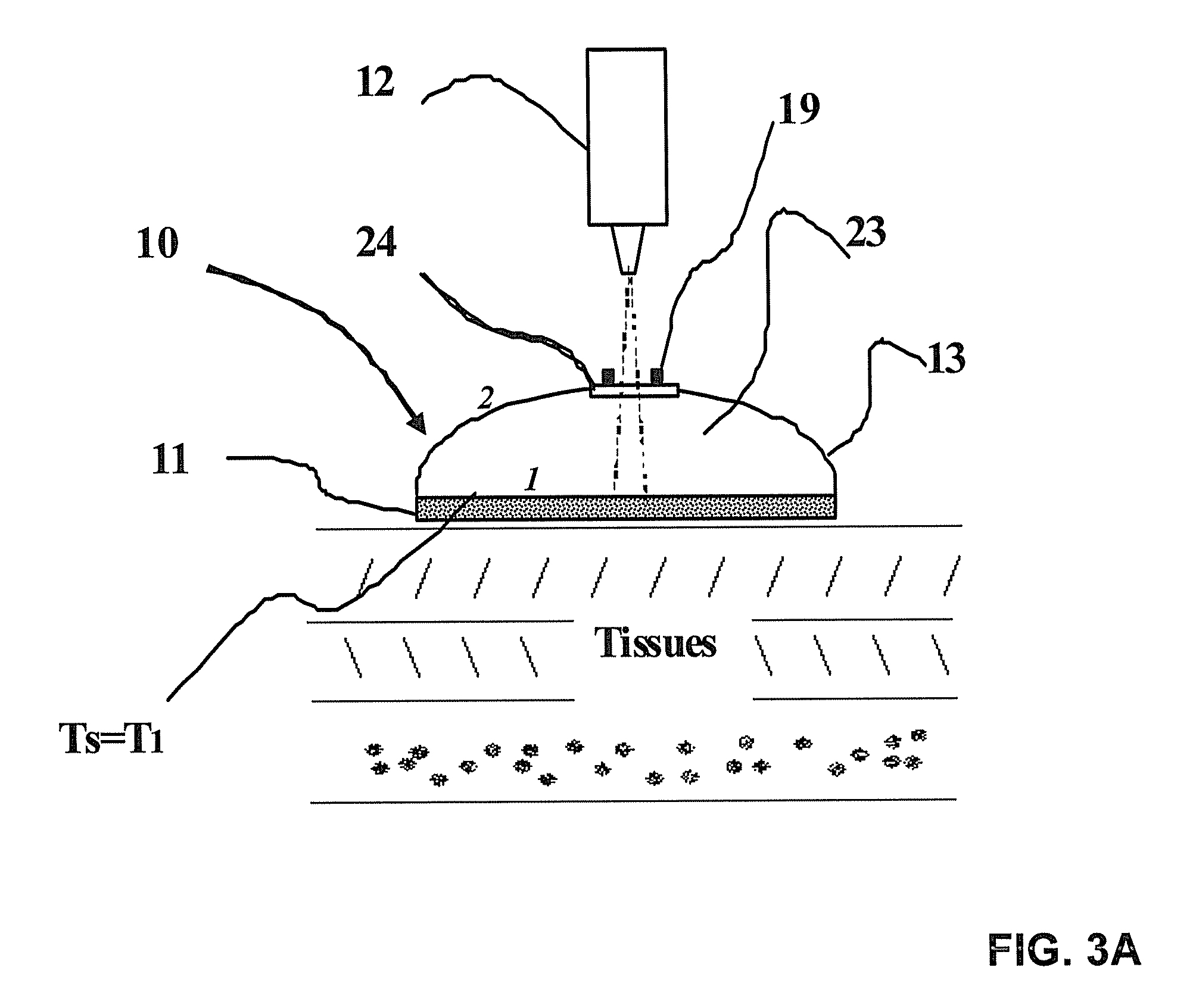Temperature measurement device
a temperature measurement and temperature technology, applied in the direction of sensors, material thermal analysis, diagnostics, etc., can solve the problems of less accuracy for shortened measurement time, inconvenient patient long measurement time, trade-off, etc., and achieve the effect of facilitating two or more measurement spots and different thermal boundary conditions
- Summary
- Abstract
- Description
- Claims
- Application Information
AI Technical Summary
Benefits of technology
Problems solved by technology
Method used
Image
Examples
second embodiment
[0115]One implementation of reader 12 is as an IR radiometer that reads the IR radiation at the points (FIG. 3A). In that case, it is necessary for cover 13, which is opaque to radiation, to include an aligner 19 for aligning reader 12 over the point and a small access point 24 in cover 13 through which radiation can pass for reading by the radiometer. One way to implement access point 24 is to make it permanently IR-transparent but small enough not to allow significant IR radiation to escape, for example as a window or opening. Another way to implement access point 24 is to make it IR-opaque but capable of being opened by radiometer reader 12 at the time of the reading, for example, as a spring-hinged shutter that is pushed open by the radiometer and closes when the radiometer is removed or as a diaphragm such as an aperture used to light entering a camera. Although it is not critical in this embodiment and in the second embodiment, how much radiation escapes through access point 2...
first embodiment
[0126]the present invention is now described with reference to FIG. 3A. This embodiment requires that reader 12 be the IR radiometer implementation described earlier with reference to FIG. 3A. Therefore, in this embodiment, cover 13 of patch 10 comprises access point 24, enabling IR-radiation reading. Two readings are made, one measurement through access point 24 of IR radiation at a point, such as the one labeled 1 in the figure, on the surface of contact component 11, the other one, such as the one labeled 2 in the figure, on the external surface of cover 13. As will be explained later, for greatest accuracy, it is preferably to measure at least three pairs of such points 1 and 2, for example using a patch 10 implementation such as the one shown in FIG. 5A. In that implementation, contact component 11 is divided into three sections, AA, BB, and CC, each having a different thermal boundary condition, hence a different q″s, and Ts. Thermal boundary conditions of points on contact co...
third embodiment
[0221]the present invention is now described with reference to FIG. 9, which is a cross section side view of patch 10. In this configuration we assume that qs″≈0 and no radiation or convection effects occur on the surface. In this case, if the contact component 11 is big enough to avoid lateral heat flux and the cover 13 emissivity is low on both its internal and external surface (for example with a reflective surface) and if access element 24 does not leak a significant amount of radiation (for example a small opening having an area of less than 5% of the total area of the cover), then we can assume that Ts is close enough to Tdeep to be considered equivalent. Therefore, a direct measurement of Ts can be used to find Tdeep. For example, in the case of human body temperature measurement, a patch could have a diameter larger than 20 mm and a cover 13 having emissivity of less than 0.1 on both surfaces of the cover.
[0222]In order to get good signal to noise ratio, one can use a high e...
PUM
| Property | Measurement | Unit |
|---|---|---|
| diameter | aaaaa | aaaaa |
| emissivity | aaaaa | aaaaa |
| temperature | aaaaa | aaaaa |
Abstract
Description
Claims
Application Information
 Login to View More
Login to View More - R&D
- Intellectual Property
- Life Sciences
- Materials
- Tech Scout
- Unparalleled Data Quality
- Higher Quality Content
- 60% Fewer Hallucinations
Browse by: Latest US Patents, China's latest patents, Technical Efficacy Thesaurus, Application Domain, Technology Topic, Popular Technical Reports.
© 2025 PatSnap. All rights reserved.Legal|Privacy policy|Modern Slavery Act Transparency Statement|Sitemap|About US| Contact US: help@patsnap.com



